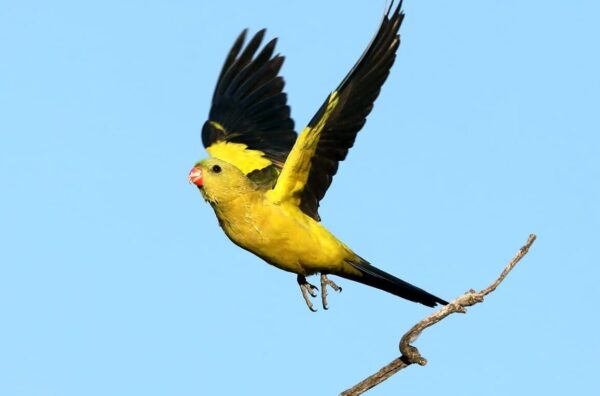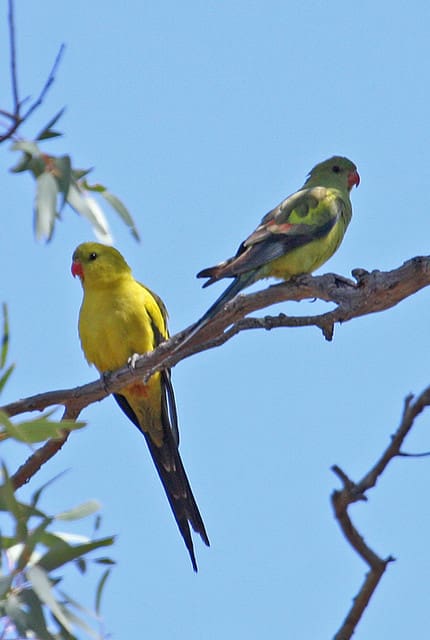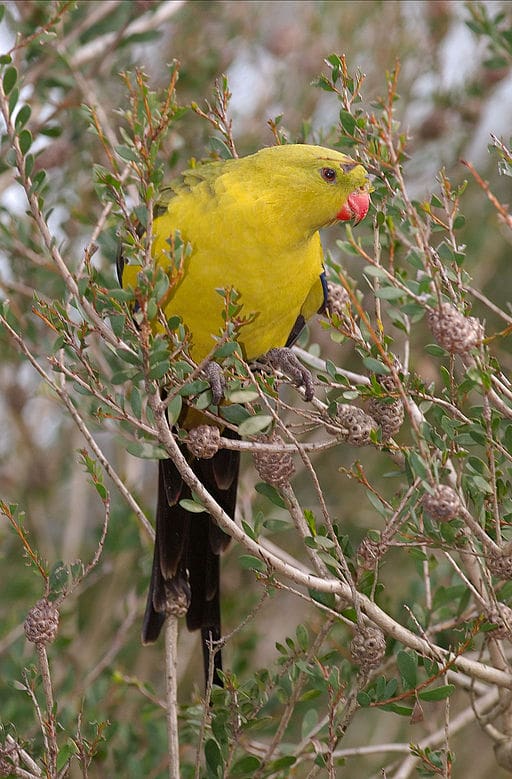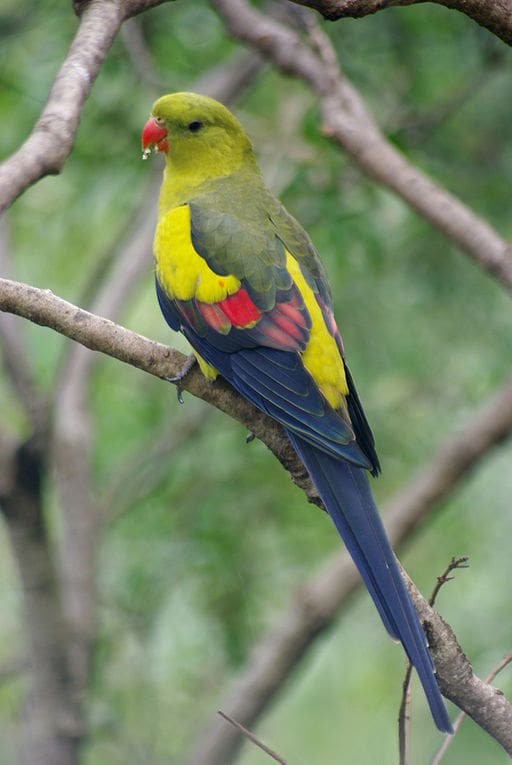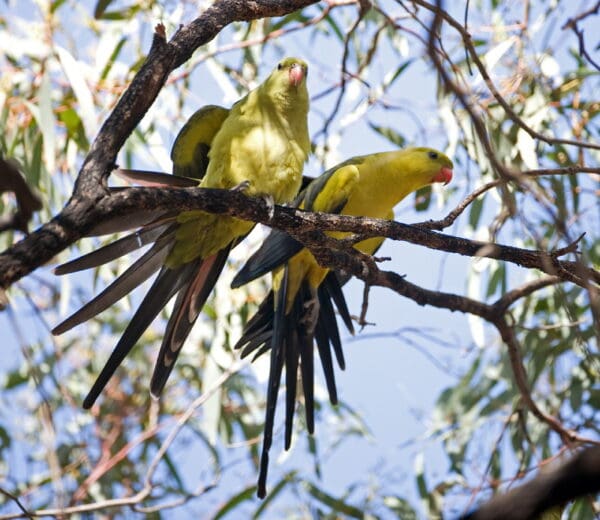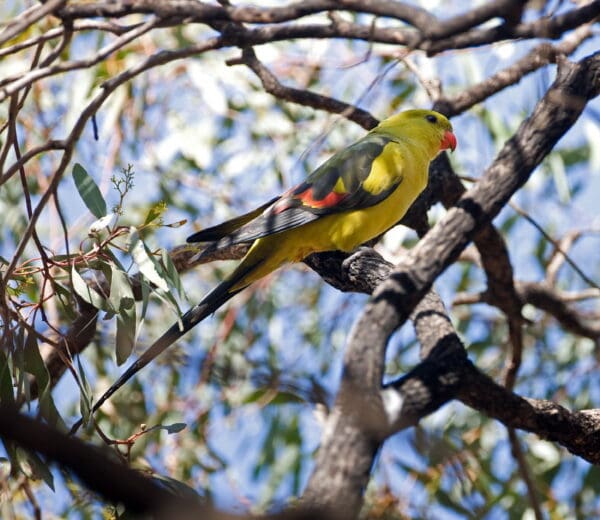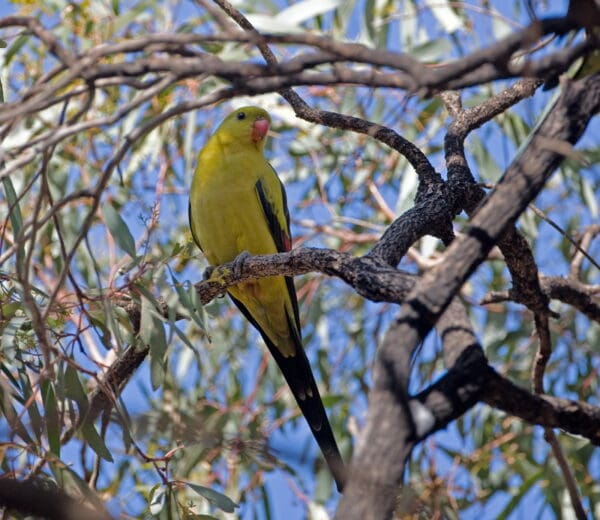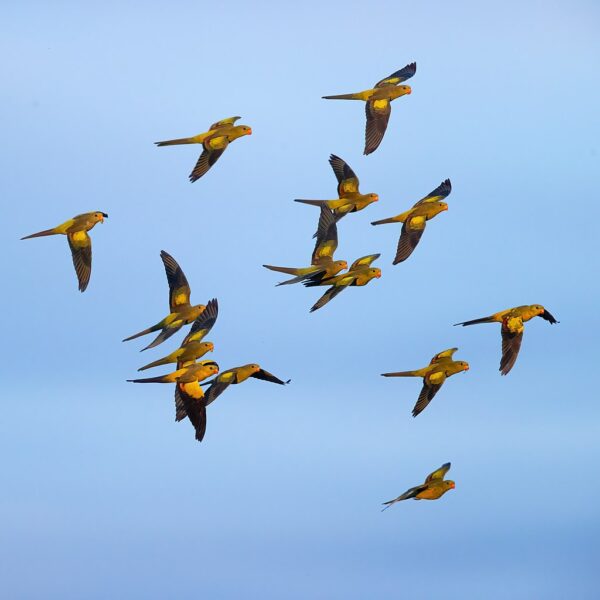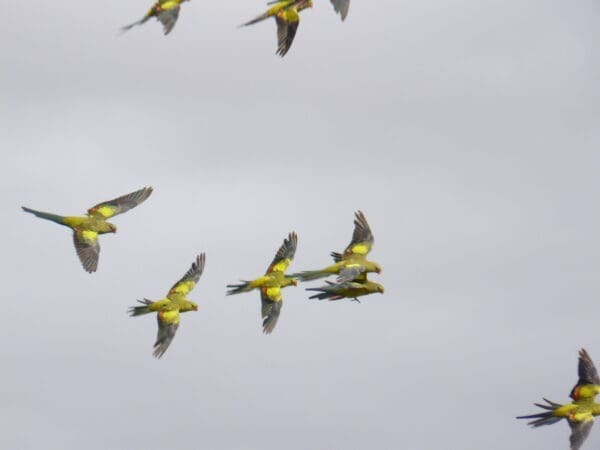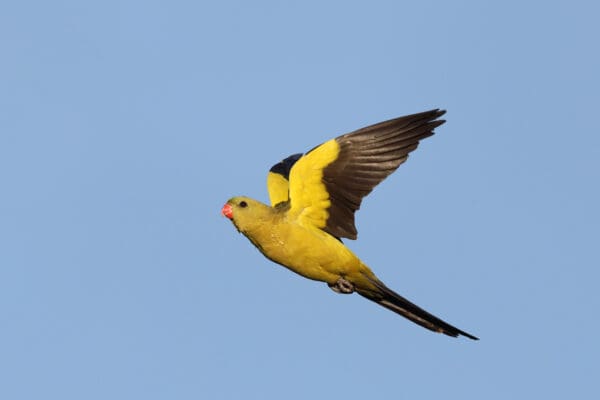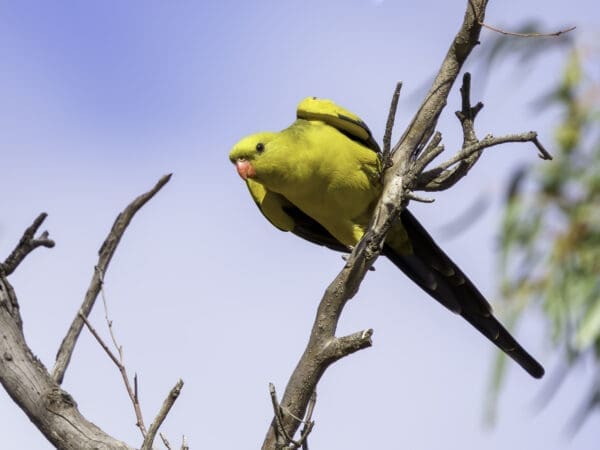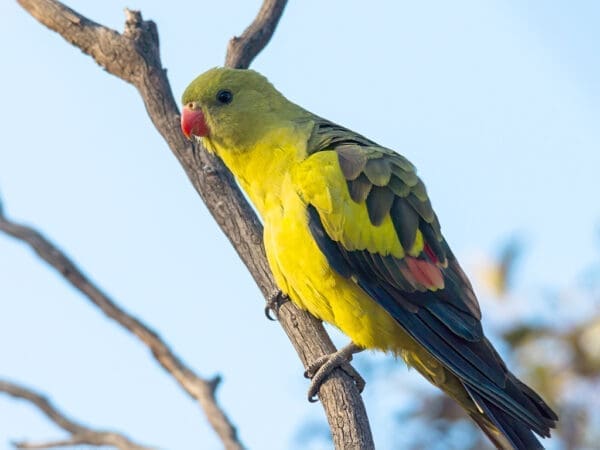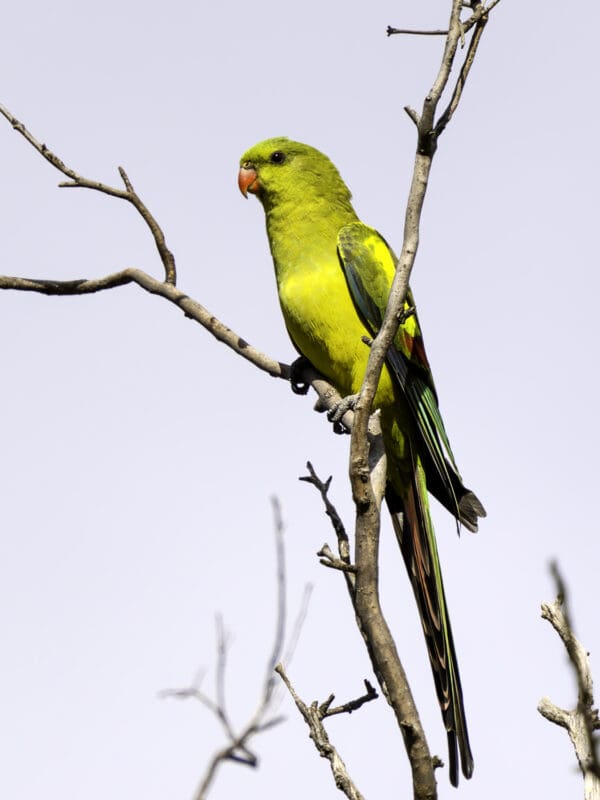Regent Parrot
Also known as:
Smoker, Smoker Parrot, Mallee Smoker, Rock Pebbler, Rock Peplar, Black-tailed Parrot or Parakeet, Regal Parrot, Marlock Parrot
Also known as:
Smoker, Smoker Parrot, Mallee Smoker, Rock Pebbler, Rock Peplar, Black-tailed Parrot or Parakeet, Regal Parrot, Marlock Parrot
![© Patrick Kavanagh [CC BY 2.0] via Flickr A wild male Regent Parrot on the wing](https://gt2024.parrots.org/wp-content/uploads/1990/11/Regent-Parrot-Patrick-Kavanagh-e1733506749520-100x100.jpg)
![© Patrick Kavanagh [CC BY 2.0] via Flickr](https://gt2024.parrots.org/wp-content/uploads/2023/01/wpt_Regent-Parrot_1181-14-100x100.jpg)
![© Tony Morris [CC BY-NC 2.0] via Flickr](https://gt2024.parrots.org/wp-content/uploads/2023/01/wpt_Regent-Parrot_1181-13-100x100.jpg)
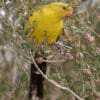
![© craig [CC BY 2.0] via Wikimedia Commons](https://gt2024.parrots.org/wp-content/uploads/2023/01/wpt_Regent-Parrot_1181-6-100x100.jpg)
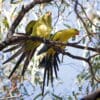
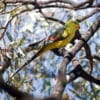
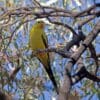

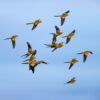
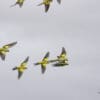
![© Patrick Kavanagh [CC BY 2.0] via Flickr A wild male Regent Parrot on the wing](https://gt2024.parrots.org/wp-content/uploads/1990/11/Regent-Parrot-2-Patrick-Kavanagh-100x100.jpg)

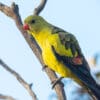
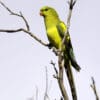
DID YOU KNOW?
The Regent Parrot will occasionally nest in holes in vertical riverbanks.

Polytelis

anthopeplus
Size:
40 cm (15.6 in)
Weight:
150-206 g (5.25-7.2 oz)
Subspecies including nominate:
two: P.a. anthopeplus, P.a. monarchoides
Colour Adult:
P.a. anthopeplus: Male-bright yellow head, underparts and rump; dusky olive mantle and upper back; dusky olive inner scapulars washed variously with black; black outer scapulars and tertial feathers; lower tertials washed with red; yellow patch on folded wing; red inner secondary coverts tipped with yellow; black tail, tipped finely on undersides of side tail feathers with yellow/white. Beak orange/red. Eye orange. Female-yellow/olive head and underparts; dull yellow wing patch; wing patch smaller in size; lower tertials and inner secondary coverts pink/red; upper tail dull olive, the side tail feathers widely tipped and margined with red/pink on inner webs. Eye brown/orange.
P.a. monarchoides: Male-differs from anthopeplus in that head and underparts are duller olive/yellow. Female-as in anthopeplus, but more olive, less yellow on head and underparts; less dull yellow on lesser and median wing coverts.
Colour Juvenile:
P.a. anthopeplus: As in adult female. Beak orange/yellow. Eye dark brown.
Call:
Contact call is described as prolonged and rolling; harsher than call of Superb Parrot. Also emits a quiet twittering after landing. Feeds in silence.
More Information:
Avibase
National Recovery Plan for the Regent Parrot (Eastern subspecies)
Content Sources:
CITES
BirdLife International
Cornell Lab of Ornithology/Birds of the World
Parrots: A Guide to Parrots of the World, Juniper and Parr, 1998
Parrots of the World, Forshaw and Cooper, 1977. 2010 edition
Parrots of the World, Forshaw, 2006.
Parrots in Aviculture, Low, 1992.
Lexicon of Parrots, Thomas Arndt.
Parrots: Their Care and Breeding, Low, 1986.
Captive Status:
Less common
Longevity:
25 yrs
Housing:
Walk-in enclosure, minimum length 7 m (23 ft).
Diet:
Small seed mix such as: canary, millet, and smaller amounts of oats, buckwheat, safflower and a little hemp; limited sunflower seed; spray millet; green leaves such as: Swiss chard, lettuce, sowthistle, dandelion, chickweed; seeding grasses; rearing food made from hard-boiled egg, wholegrain bread and carrot, all ground to crumbly consistency; fruits such as: apple, pear, orange, banana; complete pellet.
Enrichment:
Provide bird-safe, non-sprayed branches such as fir, pine, elder and willow; also provide flowering branches.
Nest Box Size:
Diagonal nestbox, 7″ x 7″ x 24″ (17.8 cm x 17.8 cm x 61cm).
Clutch Size:
4-6
Fledging Age:
5 weeks
Hatch Weight:
—
Peak Weight:
—
Weaning Weight:
—
World Population:
About 21,500. Population of anthopeplusis is probably stable overall; monarchoides may be declining.
IUCN Red List Status:
Least Concern
CITES Listing:
Appendix II
Threat Summary:
Not globally threatened, but monarchoides in SE Australia endangered. The clearance of mallee scrub, persecution, car strikes, loss of nest trees and honeybee nest infestation are all considered to be threats.
Range:
P.a. anthopeplus: Inland SE Australia, near middle of Murray and lower Darling Rivers and corresponding tributaries in far SE New South Wales and NW Victoria to nearby E South Australia.
P.a. monarchoides: SW Australia, north to Lake Moore district and east to eastern Goldfields, Balladonia district, and Israelite Bay.
Habitat:
Found in riparian river redgum habitats, mallee scrub areas, box woodland with cypress pine, orchards and vineyards. In the west this species is found in Acacia and Eucalyptus woodland.
Wild Diet:
Feeds on seeds of Eucalyptus, Acacia, grasses including Poaceae and herbaceous plants Asteraceae, Chenopodiaceae, Cucurbitaceae, Dilleniaceae herbs, fruits of Ficus and Amyema mistletoe, berries, leaf buds and flowers. Cereal crops, cultivated fruits and nuts from orchards may also be taken.
Ecology and Behaviour:
Birds disperse over large area after breeding season. Outside of breeding birds are found in boisterous flocks of a hundred or more, but are generally wary of humans. Feeds mainly on the ground.
Clutch and Egg Size:
4-6 rounded eggs, 31.0 x 24.5 mm (1.2 x 0.9 in)
Breeding Season:
August-January, sometimes May. Nest is in deep hollow.
